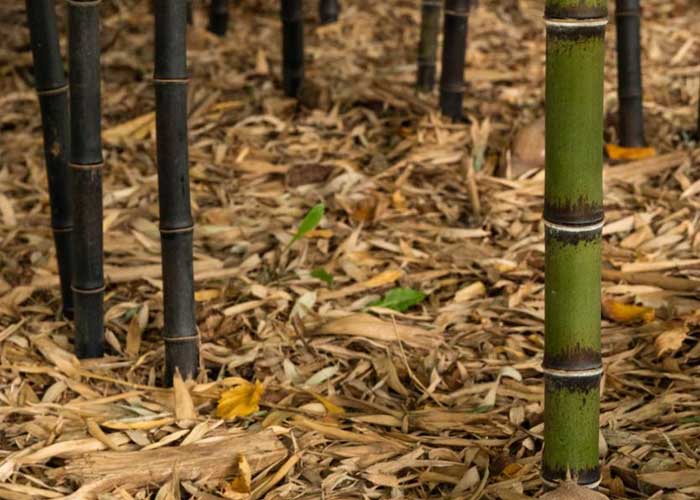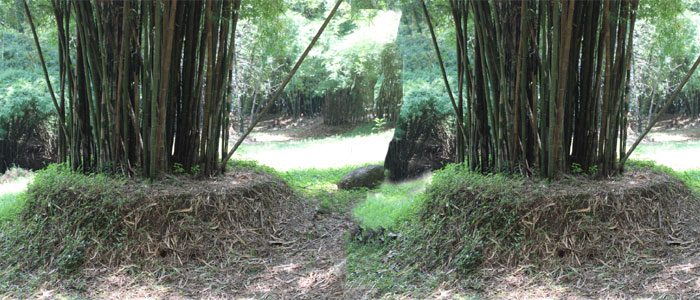Mulching
Mulching is necessary for the production of good-quality bamboo shoots. Mulching retains soil moisture as well as controls the growth of weeds. For plantations that are maintained for their edible shoots, the mulch protects young shoots from direct sunlight and keeps them moist, thus allowing them to grow to an optimal size without hardening and losing their edible quality.
Mulching can be done uniformly by spreading a thick layer (10 cm) of leaf litter or other organic matter on the surface of the soil around the bamboo clump. In addition to preventing weed growth, this process helps to conserve soil moisture and contributes organic nutrients to the plant and also controls weed growth and improves soil fertility and organic carbon. It is advisable not to rake or sweep up the bamboo leaves from under the plant since they serve as good on-site mulching material, and maintain the soil soft and moist while also recycling silica and other natural compounds required by the bamboo.

Soil mounding
Soil mounding is usually done on older plantations of sympodial bamboos with rhizomes being exposed from the soil. When the rhizomes in sympodial bamboos grow horizontally beneath the soil and only the newly emerging shoots grow upwards and the clump gets older the rhizome system tends to get exposed above the ground. This usually happens when the soil is eroded and the mulch is minimal. In such a clump, rhizomes are likely to be retarded in growth if it gets exposed to the sun and the overall availability of nutrients and moisture tends to be reduced.

